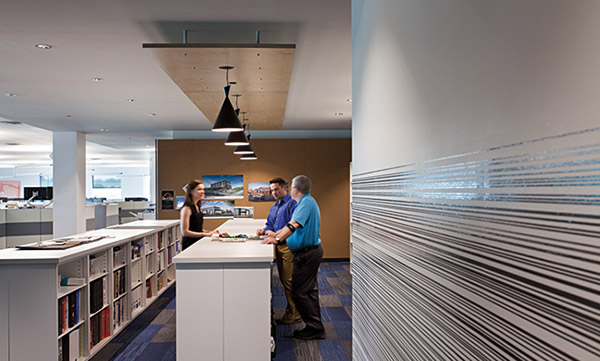Collaborative Culture is Not Achieved with Beautiful Spaces
Simply adding a beautiful space to your office and calling it a collaborative area will not create a collaborative culture.
Simply adding a beautiful space to your office and calling it a collaborative area will not create a collaborative culture.

Many companies are moving away from top-down management structures towards collaborative ones where ideas are shared and encouraged to flow freely back and forth. With this change, employees need to work with others within the office more frequently. Companies are spending millions of dollars to renovate facilities into collaborative work areas. But how is collaboration really achieved?
Typically, planned collaborative spaces are separate from work areas usually in forms of meeting rooms that need to be scheduled. Scheduling a formal meeting, booking a conference room and writing an agenda for a conversation that could take place in the same amount of time can be highly unproductive.
Natural collaborative spaces are where the impromptu work sessions happen. They are intersections that encourage accidental interactions often within work areas, not separate spaces. Examples of these spaces are where cubicles intersect or highly used pathways between offices. These meetings are more inclusive as they happen more informally in the open.
Along with learning aesthetic likes and dislikes, architects and designers collect information, gather feedback and spend time within the current environment to determine where natural intersections exist and then design additional intersections to increase collaboration. While many open office spaces appear to be set up at random, an open collaborative office environment is really based on the data collected during this initial process.
Simply adding a beautiful space to your office and calling it a collaborative area will not create a collaborative culture. Creating natural intersections to increase the opportunity for spontaneous conversation and socialization will create a collaborative culture making everyone approachable and encourage casual conversation versus forced.